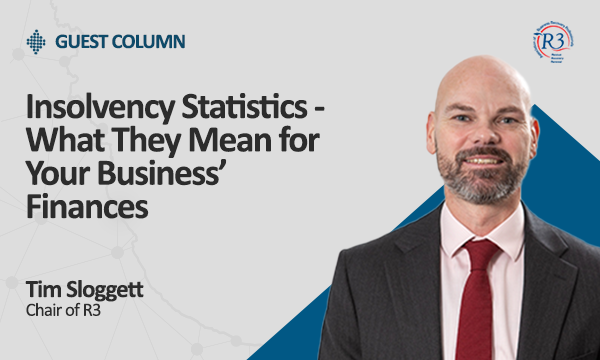7 Simple Techniques For Insolvency Practitioner
7 Simple Techniques For Insolvency Practitioner
Blog Article
Insolvency Practitioner Things To Know Before You Buy
Table of ContentsThe 6-Second Trick For Insolvency PractitionerThe 8-Minute Rule for Insolvency PractitionerInsolvency Practitioner - QuestionsThe Ultimate Guide To Insolvency PractitionerInsolvency Practitioner Things To Know Before You Get ThisThe Facts About Insolvency Practitioner UncoveredNot known Incorrect Statements About Insolvency Practitioner
Insolvency is when obligations are greater than the worth of the business, or when a debtor can not pay the financial obligations they owe. A business can come to be bankrupt as a result of a number of circumstances that bring about inadequate cash flow. When confronted with bankruptcy, an organization or person can speak to creditors directly and restructure financial obligations to pay them off.Insolvency can result in insolvency procedures, in which legal activity will certainly be taken versus the insolvent individual or entity, and possessions might be liquidated to settle impressive financial debts. Company owner might speak to lenders straight and restructure financial obligations into more convenient installments. Lenders are usually open to this method since they intend to be paid off and prevent losses, also if the settlement is on a postponed routine.
See This Report about Insolvency Practitioner
The proprietor develops a proposal describing how the debt might be restructured using price decreases or other strategies for support. The proposition shows creditors just how the service may produce enough cash circulation for rewarding procedures while paying its debts. Usually, a forgiven debt may be considered earnings by the Internal Income Service (IRS).

The Best Guide To Insolvency Practitioner
Business might wind up paying huge amounts of money in damages and be not able to proceed operations. When operations stop, so does the company's earnings. Lack of revenue leads to accounts payable and creditors asking for cash owed to them. Some firms end up being insolvent since their goods or services do not develop to fit customers' changing needs.
Expenditures surpass revenues and costs stay unsettled. Kinds of bankruptcy consist of cash-flow insolvency and balance-sheet insolvency. Cash-flow insolvency occurs when a business has the properties to cover their financial obligations however they are in the incorrect kind, such as property as opposed to fluid funds. Balance-sheet insolvency, on the various other hand, indicates an absence of possessions in any kind of form to cover debts.
The internal revenue service states that a person is financially troubled when the overall obligations go beyond total assets. A bankruptcy, on the various other hand, is an actual court order that shows how an insolvent individual or company will check here certainly repay their financial institutions, or how they will offer their possessions in order to make the repayments.
Indicators on Insolvency Practitioner You Should Know

Financial obligation consolidation is when you incorporate several lendings into one new financing, often to accomplish better terms. Bankruptcy is not the exact same as bankruptcy, although a business that has actually come to be bankrupt may declare personal bankruptcy. Insolvency is the state of not having the ability to pay your obligations while bankruptcy is a legal procedure to release your financial debts.
Understanding the variables that can bring about insolvency, such as overspending, can aid you avoid insolvency Going Here and its consequences.
Rumored Buzz on Insolvency Practitioner
It is well understood that directors and policemans of companies (and supervisors of minimal obligation business) owe fiduciary tasks to their companies and their shareholders (or members). These fiduciary commitments are defined by state laws and, though there are variants from state to state, they typically consist of a responsibility of commitment and a responsibility of care.
The task of care needs supervisors and police officers to exercise diligence, to make educated decisions, and to act in great belief so that their activities remain in the very best rate of interest of the business. Beyond the scope of this conversation, some states enable these obligations to be restricted either by so noting in the organizational records or conforming with various other requirements.
The Best Strategy To Use For Insolvency Practitioner
Most states define insolvency in two ways( 1) when a business's obligations end up being higher than the sum of its possessions or (2) when the company ends up being unable to pay its debts as they come to be dueand embrace both meanings (Insolvency Practitioner). The shift in duties happens due to the fact that when a company is bankrupt, there is no worth in the business past that owed to the business's creditors to ensure that the equity holders no longer have an economic stake in other the business
Be careful concerning giving shareholders favoritism at the expense of creditors (e.g., accrediting and moneying a dividend or a supply redemption). Take care concerning favoritism between courses of shareholders. Clear up initiatives to discover all the facts before taking a particular course of action; directors ought to really believe that any choices made are in the ideal rate of interests of the firm in its totality (i.e., choices will certainly be assessed in knowledge in light of the impact of such activities on the corporation).
In any personal bankruptcy or bankruptcy case, payments made to certain financial institutions at the cost of various other lenders can be clawed back, particularly if there is some connection between the business and the financial institution. Consider proposing at a yearly shareholder conference (or any other meeting of stockholders) a resolution attesting that all previous organization choices and activities taken by the directors and officers of the company were absorbed excellent confidence after a workout of sensible treatment.
Not known Facts About Insolvency Practitioner
Fully disclose any personal or company relationships with parties on the various other side of deals involving the company to stay clear of the look of a dispute of rate of interest. In evaluating possible fund elevating transactions or a sale of assets of the troubled corporation, understand that these deals may be scrutinized later on due to any subsequent expansion of supervisors' fiduciary tasks to consist of lenders.
Report this page